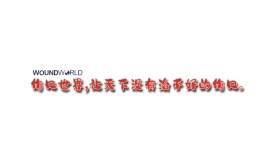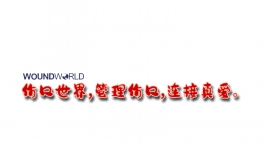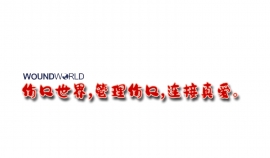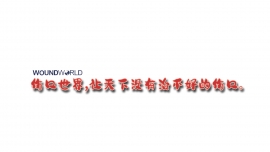文献精选
Helen O’Neil
Diabetic neuropathy is one of the most prevalent chronic complications in people living with diabetes and painful diabetic neuropathy is difficult to manage clinically. Guidelines recommend offering a choice of amitriptyline, duloxetine, gabapentin or pregabalin as initial treatment for neuropathic pain. It is recommended that pharmacotherapy is offered in a stepwise approach to ensure tolerability and effectiveness of individual medications. Patients often do not respond to monotherapy and, therefore, combination pharmacotherapy may be required. The aim of treatment is to improve quality of life for patients living with painful diabetic neuropathy by reducing pain and promoting increased participation in all aspects of daily living.
Citation: O’Neil (2023) Pharmacological treatment of painful neuropathy in adults with diabetes. The Diabetic Foot Journal 26(1): 20–3
Key words
- Diabetic neuroarthropathy
- Neuropathic pain
- Pharmacological therapy
Article points
1. Painful diabetic neuropathy is common in people with diabetes and is difficult to manage clinically.
2. Guidelines recommend amitriptyline, duloxetine, gabapentin or pregabalin as initial pain management options.
3. Patients often do not respond to monotherapy, so combination pharmacotherapy may be required.
Author
Helen O’Neil is Senior Medicines Optimisation Pharmacist, South Tyneside and Sunderland NHS Foundation Trust, UK
Gillian Harkin
Differential diagnosis between active Charcot neuroarthropathy and infection in the presence of neuropathic ulceration presents a significant challenge to the clinician. Both conditions may present as a red, hot, swollen foot with an absence of pain. Although additional tests may aid in developing a clear diagnosis these can be invasive (blood testing), carry exposure to ionising radiation (X-ray) or be difficult to access rapidly (MRI). The following case study demonstrates how infrared thermography may prove useful within the clinical environment as a diagnostic test as well as a useful educational tool to guide treatment planning in collaboration with an individual with diabetes.
Citation: Harkin G (2023) Imaging in osteomyelitis and Charcot neuroarthropathy: can infrared thermography aid in diagnosis?. The Diabetic Foot Journal 26(1): 24–8
Key words
- Charcot neuroarthropathy
- Differential diagnosis
- Osteomyelitis
- Thermal imaging
- Ulceration
Article points
1. It can be difficult to differentiate between Charcot neuroarthropathy and osteomyelitis due to similar clinical presentations.
2. Thermal images can be used to inform discussions as part of realistic medicine
3. Thermal imaging may be helpful in identifying the origin of heat within the foot, aiding diagnosis.
Author
Gillian Harkin is Lead Clinical Podiatrist. NHS Greater Glasgow & Clyde, Glasgow, UK.
Gastroparesis is a recognised complication of diabetes (both type 1 and type 2) and, whilst not the most commonly observed complication, it carries with it a significant impact on a person’s health, glycaemic control, social functioning and mental wellbeing. Gastroparesis is often not well recognised because of the disparate group of symptoms it may present with. Symptoms are often misattributed or not recognised, and consequently the diagnosis is either missed or delayed. It should be managed by a multidisciplinary team with knowledge of and expertise in this area. Above all, the team should be understanding and help steer patients to the best supportive care.
Author: Simon Saunders,
Clinical Lead Academic Consultant in Diabetes and Endocrinology, Mersey and West Lancashire Teaching Hospitals NHS Trust
Citation: Saunders S (2023) At a glance factsheet: Diabetic gastroparesis. Diabetes & Primary Care 25: [Early view publication]
Neil Baker and Isam Osman
An unusually good blood supply and peripheral neuropathy are reportedly accepted prerequisites for the pathogenesis of Charcot neuroarthropathy (CN) in people with diabetes. There is anecdotal evidence that CN does not occur in the presence of peripheral vascular disease. We report the first case of a person with diabetes who had revascularisation surgery performed to both legs independently, which was subsequently followed by CN in the corresponding feet. This case illustrates the importance of a good blood supply in the development of CN. Furthermore, it supports the concept that reduced arterial supply is protective against the development of CN. This case also highlights the need for regular follow-up reviews where postoperative hyperaemia is evident.
Citation: Baker N, Osman I (2023) Bilateral Charcot neuroarthropathy following successive surgical arterial revascularisation to both legs in a patient with diabetes — an interesting case history. The Diabetic Foot Journal 26(1): 36–9
Article points
1. A very good blood flow is a prerequisite for active Charcot development
2. Although this is a rare case, it is advised to be vigilant in monitoring a hot, swollen, inflamed foot and leg after vascular intervention in a patient with existing neuropathy
3. Early detection and immobilisation (cast) of active Charcot with regular follow up is imperative to facilitate optimal resolution and reduction in deformity
4. Differential diagnosis is essential in the presentation of a neuropathic red/ discoloured (dark), hot, swollen foot and leg, particularly if ulceration is present.
Authors
Neil Baker is Consultant Diabetes /Vascular Podiatrist, Sana Clinic Al Shaab Kuwait; formerly Ipswich Hospital NHS Trust; Isam Osman is Consultant Vascular Surgeon, King Saud Medical City, Riyadh, Saudi Arabia; formerly Ipswich Hospital NHS Trust;
Key words
- Charcot
- Neuropathy
- Peripheral arterial disease
- Vascular intervention




